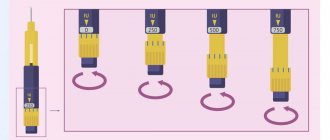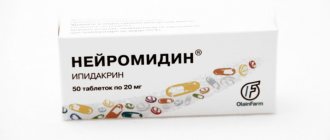To inject yourself into the thigh muscle tissue, you must have basic skills in using a syringe, needle and injection solution. It is recommended to resort to these therapeutic actions only in extreme cases, when there are no close people or medical workers nearby who can administer the drug intramuscularly.
Independent use of injection solutions requires compliance with safety rules, as well as a number of preparatory procedures that minimize the risk of complications.
Can I inject myself?
Injections into the muscle tissue of the outer thigh can be performed independently without the help of strangers. In order to administer the drug by injection to yourself, you should study in detail the provisions of the instructions that regulate the conduct of this kind of therapeutic measures.
Only if you have basic knowledge about the anatomical structure of the hip, the location of the lateral and deltoid muscles, and the possible risk of developing unwanted complications, can you begin independent treatment.
If you have the slightest doubt, a feeling of fear or an attack of panic that appears at the sight of a medical needle, it is recommended to refuse to inject the medication without the help of strangers.
Determining the area for subcutaneous injection
In order not to harm yourself, you need to learn how to correctly determine the injection sites and alternate zones [4]:
- arms - the outer surface of the shoulder in the area under the deltoid muscle and not reaching the elbow joint;
- hips - the front surface 10-15 cm from the groin and 10-15 cm from the knee along the center line of the leg; posterolateral surface from the buttock and not reaching the popliteal fossa;
- buttocks: outer upper quadrant (draw two imaginary lines: horizontal - from the place where the intergluteal gap begins to the greater trochanter of the femur and a vertical line perpendicular to it) or slightly higher, as far as subcutaneous fatty tissue allows;
- belly - approximately 5 cm from the navel, outside the linea alba.
Subcutaneous injections should be administered where the subcutaneous fat layer is most developed so that the drug does not inadvertently enter the muscle [4]. Within each zone there is space for multiple injections. As you gain the skill of administering injections yourself, you will be able to distribute zones more and more compactly.
Correct needle insertion site
The insertion of a syringe needle for the purpose of a therapeutic procedure can be carried out into the muscles of the buttock or the outer side of the thigh. These are the main areas of the human body that are best suited for intramuscular injections. In some cases, shoulder tissue may be used.
Where to give injections in the thigh
If there is a need to inject into the outer side of the thigh, then it is necessary to use that part of the lower limb that is located at a distance of 20-25 cm below the hip joint. This area of the leg has sufficient muscle mass density, and the injection of a medicinal solution will be as convenient and safe as possible.
Prevention
To prevent various types of pain in the back, lower back and other places associated with the musculoskeletal system, as well as to prevent pain in the internal organs, the following rules must be followed.
- Correctly get up, stand, walk, sit and lie down.
- Maintain proper posture when lifting and moving heavy objects.
- Exercise vigorously.
- Follow a strict diet and switch to a healthy diet.
- Monitor your psychological state and do not give rise to negative emotions.
What is required for the procedure?
It is necessary to give injections in the thigh to yourself only after carrying out high-quality hygiene of the surface of the hands.
To carry out this therapeutic procedure, you will need to have the following items available:
- a sterile disposable syringe with a capacity of 2, 5, 10 ml, complete with a standard medical needle intended for intramuscular administration;
- a bottle or ampoule with a liquid medicinal solution that is indicated for use for therapeutic purposes;
- detailed instructions for using the drug to be injected into the outer thigh (before giving the injection, you must re-read the section on the dosage regimen);
- a pack of sterile medical cotton wool or pre-prepared napkins, tampons, which are used for antiseptic treatment of the skin surface of the thigh;
- ethyl alcohol 96% concentration, intended for disinfection of the tissue area into which the medicinal solution will be injected;
- a pair of medical gloves, the packaging of which is opened immediately at the time of therapeutic manipulations.
A medical needle for performing an intramuscular injection must have a length of at least 3 cm. This will minimize the appearance of unpleasant sensations after its introduction into the muscle tissue, and will also ensure the deepest possible application of the drug.
The components of the injection solution will act much faster, which will significantly increase the likelihood of a positive therapeutic effect.
Using a syringe with a needle that is too short can lead to the injection of an injection solution into the area of subcutaneous fatty tissue, which will subsequently cause local tissue inflammation, as well as the development of other undesirable complications.
Instructions for subcutaneous injections
You will need:
- a clean cloth napkin;
- packaging with the drug in a syringe and alcohol wipes;
- two sterile dry cotton balls (one of them is a spare).
Check your doctor's prescription before giving the injection. Make sure that the drug you purchased or received is appropriate. Focus on the international nonproprietary name - INN. Check whether the drug has expired or whether the syringe is damaged. The solution in it must be the color stated in the instructions and not contain foreign particles or suspensions [1,2].
How to give injections [1,2]:
- Wash your hands with warm water and soap.
- Prepare everything you need in advance. Place a clean cloth on the table, lay out the package with the drug, remove the syringe and alcohol wipes from it. Before using the syringe with the drug, keep it at room temperature for the time specified in the instructions for use. Place two dry cotton balls. Find a comfortable, relaxed position.
- Select the injection site according to the instructions for medical use of the drug prescribed for you. Carefully read the recommended injection sites and inject the drug only into the indicated areas.
- Wipe the selected injection site with one or two wipes. Let the skin dry and discard the tissues.
- Take the syringe with the injection needle and carefully remove the protective cap without touching the needle.
- Form and maintain a skin fold according to the instructions in the instructions for use. Without touching the skin with your fingers, quickly and firmly insert the needle into the fold at a right angle, holding the syringe like a pen. Slowly pressing the plunger, inject the solution until the syringe is completely empty.
- Remove the needle with a vertical movement without tilting it to the sides. Release the skin fold. Apply a dry, sterile cotton ball to the injection site.
- After the procedure, the syringe must be disposed of.
Try to choose a new injection site each time and do not inject the drug into painful areas.
Do not rub or massage the injection site.
Manufacturers include special short needles for subcutaneous injections with kits for injections of PMTRS, so the drug is administered at a right angle [3].
Preparation for the procedure
Injections in the thigh should be given to yourself only after high-quality preparatory measures have been completed. This is a prerequisite for successful treatment without the help of medical personnel.
Preparation for self-administration of an injectable drug into the outer side of the thigh muscles involves the following steps:
- You need to take a bar of laundry soap and thoroughly wash your hands using warm water. Dry your skin with a clean and dry towel.
- Then you will need to open the package of medical gloves and put them on your hands, ensuring maximum sterility.
- The ampoule with the drug is shaken to ensure uniform mixing of all components, and then its surface is wiped with cotton wool, which has been previously moistened in 96% concentration of ethyl alcohol. These actions are aimed at disinfecting the bottle of medication.
- The tip of the ampoule with the injection solution must be carefully filed with an abrasive element, which should come with the drug, and then its glass top must be broken off.
- Open the package with a disposable sterile syringe.
- Place a medical needle on top of the syringe, remove the protective cap, and then insert it into the glass ampoule with the injection solution.
- Pull the plunger of the syringe so that a sufficient amount of liquid medication enters its cavity. In this case, it is necessary to remember the dosage regimen of the drug, avoiding the use of too large doses.
- Squeeze out the remaining air bubbles from the syringe that got into it during filling with the injection solution. These actions stop immediately as soon as the first drops of medication begin to flow from the needle hole.
At this stage, the specified organizational measures aimed at preparing for self-administration of the drug into the muscles of the outer thigh are considered completed.
To maintain maximum sterility, the injection is recommended to be given immediately. The disposable syringe is disposed of immediately after injecting the solution into the tissue of the lateral or deltoid muscle.
When should you contact your healthcare provider?
Call your healthcare provider if you have the following symptoms:
- Blood does not stop flowing from the injection site.
- You have very severe pain.
- You injected the medicine into the wrong place.
- You have a fever of 100.4°F (38°C) or higher.
- You have signs of an allergic reaction, such as swelling, redness, itching, or a rash.
- You cannot use the syringe because the medicine has expired, the medicine has foamed, changed color, become cloudy, or has crystals in it.
- You cannot use the syringe because you touched something with the needle before injecting.
- You cannot use a pre-filled syringe with Lovenox because there is no air bubble in it.
- You are having difficulty administering the injection.
to come back to the beginning
Basic safety rules when injecting yourself in the thigh
Injections in the thigh must be given to yourself with extreme caution so as not to damage large blood vessels and peripheral nerves.
A prerequisite for self-therapy with injection administration of drugs is compliance with the following safety rules:
- it is strictly forbidden to reuse a disposable syringe and needle, since such actions are fraught with infection of the tissues in the area of the injection;
- if it is necessary to carry out long-term drug therapy using intramuscular injections, it is necessary to alternate the left and right sides of the thighs in order to eliminate the factor of the formation of extensive hematomas;
- You should not inject into the same point of the thigh tissue, as this will lead to the appearance of symptoms of acute pain and will also cause the development of inflammatory processes;
- use imported syringes, as they are distinguished by sharper and thinner needles that do not cause severe pain in the area of their insertion, having minimal trauma to epithelial and muscle tissues;
- before intramuscular administration of the drug, it is always necessary to perform an antiseptic treatment of the skin surface to avoid complications;
- If minimal signs of an inflammatory process or the onset of subcutaneous bleeding or the formation of an extensive hematoma appear, you must immediately seek medical help.
It is important to remember that at the moment of self-injection into the outer thigh, the lower limb should be relaxed. For this purpose, the leg is placed on a flat surface, since excessive tension can provoke involuntary contraction of the muscle with damage to its tissue structure. A similar reaction occurs immediately at the moment of needle insertion.
Choice of pain medications
For chronic types of pain, the physician must first determine the underlying causes and nature of the pain (whether the pain is referred, neuropathic, or central). Only after this can he prescribe a suitable course of treatment with an anesthetic drug.
In case of acute pain, the doctor must determine the possible risk of side effects on the gastrointestinal tract and cardiovascular system. If there is no dyspepsia, then any non-steroidal anti-inflammatory drugs are allowed to be used, but if there is, you should take Ibuprofen. You can also take Diclofenac, Naproxen, Nimesulide or Meloxicam as an alternative.
If you have heart problems, the patient should stop taking non-steroidal anti-inflammatory drugs and turn their attention to opioid drugs, as well as paracetamol. If the risk is moderate, then the patient is prescribed Nimesulide, but on the condition that blood pressure is at the normal level or can be brought to this level or any other drug to lower blood pressure.
Choosing pain medications is a complex procedure because there are so many factors to consider
If there is a high probability of bleeding in the gastrointestinal tract, the patient should take non-steroidal anti-inflammatory drugs together with proton pump inhibitors. Such inhibitors primarily include Omeprazole. It's all about the risk of bleeding when taking NSAIDs. In order to reduce or prevent it, their use is allowed only in combination with proton pump inhibitors.
If there is a high probability of simultaneous occurrence of complications associated with the cardiovascular system and the gastrointestinal tract, the patient is required to take Nimesulide together with acetylsalicylic acid and the proton pump inhibitor Omeprazole.
If the pain subsides within a week, then treatment should be continued until the discomfort is completely relieved. When this does not happen, the patient should use muscle relaxants and local anesthetics.
The administration of corticosteroids (hormonal drugs) is allowed only if it is confirmed that the patient does not have any signs of developing tuberculosis of the joints or spine.
Note! If the patient has very severe pain, but the drugs have no effect, then the problem is in the nature of the disease. In such a situation, as a rule, there is a high probability of a non-infectious nature of the pain.
How to give an injection correctly?
The most common methods of administering drug therapy in the form of injection solutions are injections into the deltoid, gluteal and lateralis muscles.
During a long course of treatment, the use of these areas of the body can be alternated to avoid the development of an inflammatory process in the tissues of the muscular system. At the same time, it is always necessary to follow the rules for the safe administration of medications that are available in the form of medicinal solutions.
Injection into the deltoid muscle
The deltoid muscle covers the entire front and side of the shoulder and is also distinguished by its dense tissue structure.
In order to inject yourself into this area of the body, you must adhere to the following algorithm of actions:
- Carry out all organizational activities dedicated to preparing for the injection of medication.
- Soak a piece of sterile cotton wool or a previously prepared swab in 96% concentration of ethyl alcohol.
- Perform an antiseptic treatment of the skin surface of the shoulder, wiping it thoroughly.
- Visually divide the deltoid muscle into 4 even squares.
- Bring the syringe with the exposed needle to the skin surface of the shoulder.
- Using a smooth and precise movement, insert the medical needle of the syringe into the upper right segment of the deltoid muscle to a depth of 2 cm.
- Slowly administer the injection solution contained in the cavity of the disposable syringe. Depending on the type of medication, a faster or slower injection of the medication may be required. In this case, you must carefully read the instructions for use of the drug.
- After administering the injection solution, it is necessary to slowly remove the syringe needle from the deltoid muscle tissue.
- Immediately cover the injection area with a clean piece of cotton wool, which has been previously moistened in 96% concentration of ethyl alcohol.
- Hold the cotton wool for the next 10 minutes, and then dispose of it in the prescribed manner. If signs of bleeding of the tissues located at the injection site appear, it is necessary to re-moisten the cotton wool in ethyl alcohol and hold it on the surface of the wound for another 10-15 minutes.
After injection of the drug into the deltoid muscle, mild discomfort may persist in the tissues of the shoulder. The appearance of more severe symptoms in the form of acute pain that does not stop for several days requires additional examination by a general practitioner or surgeon.
During the injection, the hand into which the drug is injected should be in the most relaxed state. This will reduce the severity of pain.
Injection into the lateralis muscle
It is not difficult to give injections in the thigh to yourself, but performing this type of procedure requires composure, a steady hand and maximum concentration. In order for the injection of the drug to be carried out technically correctly, the following instructions must be observed:
- Take a piece of sterile cotton wool, soak it in 96% concentration of ethyl alcohol, and then perform an antiseptic treatment on the outer surface of the thigh.
- Visually divide the lateralis muscle into 4 identical segments located 20 cm below the hip joint.
- Place the lower limb on a flat surface, completely relax its muscles, and place a cushion made of a towel or a piece of dense fabric under the knee joint. This will avoid reflex muscle contraction, which can occur immediately at the time of the injection.
- Insert a medical needle from a disposable syringe into the lower right segment of the lateral muscle, immersing it into the body to a depth of 2 cm.
- Slowly and without sudden movements, administer the injection solution until it is completely injected into the tissues of the lower limb.
- Smoothly remove the needle from the outer side of the thigh, and wipe the injection site with sterile cotton wool soaked in a 96% alcohol solution. Then you should press the cotton wool against the wound to avoid increased bleeding of the damaged area of the body.
- Hold the cotton wool for the next 10-15 minutes.
During the injection, it is necessary to keep the syringe as level as possible. The needle should not be directed at an acute angle, as in this case the injection will be too painful and may cause undesirable complications.
After injection of the drug, you should refrain from sudden movements for 20 minutes. The leg should be on a flat surface without being subject to physical stress.
How to Store Prefilled Syringes
How you store prefilled syringes depends on the type of medicine in them. Most medications are stored at room temperature, but some should be kept in the refrigerator. Your healthcare provider will tell you how to store your syringes. Do not store prefilled syringes in the freezer or leave them in the sun.
Check one of the boxes below so you don't forget how to store your syringes.
- Store prefilled syringes at room temperature.
- Store prefilled syringes in the refrigerator.
If you have questions about storing or carrying prefilled syringes while traveling, contact your healthcare provider.
What to do if the medicine is frozen
If the medicine inside the syringe is frozen, place it near the front of the refrigerator or on a shelf in the refrigerator door to thaw. Do not use the medicine if it has been frozen more than once. Call your healthcare provider for further instructions.
to come back to the beginning
Possible complications
Technically incorrect execution of the injection, or failure to comply with the basic rules of preparation for intramuscular injection of an injection solution, can lead to the development of various kinds of negative consequences.
The table below lists the main types of complications that occur in patients who perform self-injections into the outer thigh or deltoid muscle of the body.
| Types of possible complications | Characteristics of the pathological process |
| Hematoma | The formation of a hematoma in the area of injection of the drug occurs due to the fact that when the needle penetrates the muscle tissue, damage to a large vessel occurs. The blood enters the subcutaneous tissue, coagulates and forms a dense lump, which is quite painful to the touch. The lack of treatment for this complication leads to more severe consequences in the form of the development of an acute purulent-inflammatory process. In this case, the help of a surgeon may be required to sanitation the damaged tissue. For faster resorption of the resulting hematoma, regular treatment of the painful area with ointments and gels with angioprotective properties is recommended. |
| Isolation of infiltrate | One of the most common complications that arise after self-performing intramuscular injections is the release of infiltrate, which accumulates in the subcutaneous space and soft tissues. The sacral fluid enters the surface of the epidermis and is distinguished by a rich reddish tint. A similar complication develops after a medicinal solution is injected into the same place for several days in a row without making a sufficient indentation. The release of infiltrate indicates the initial stage of the inflammatory process, which tends to progress. To eliminate this complication, a warm compress is applied to the surface of the outer thigh or deltoid muscle, and a mesh of medicinal iodine solution is also applied. |
| Broken medical needle base | A complication in the form of a broken syringe needle may occur due to a violation of the technical rules for performing the injection. For example, if at the time of the injection the muscle tissue of a person’s lower limb was in a state of tension, or the needle was inserted into the body at an acute angle until the very beginning of its cannula. If such an unusual situation arises, it is necessary to remove the needle fragment using medical tweezers. If the metal part goes too deep into the tissue, then you should use the services of a surgeon. |
| Purulent inflammation | This complication occurs due to the fact that a person who independently performs injections on the outer side of the thigh does not follow the rules of antiseptic skin treatment. During the injection of the drug, infection of soft tissues occurs, which are subsequently affected by bacterial, viral or fungal microorganisms. Purulent inflammation of the injection site is accompanied by the formation of a dense abscess, an increase in general and local body temperature, and the beginning of the process of tissue necrosis. |
| Lump formation | The appearance of lumps in the area where the drug was injected without signs of acute pain is possible if a person independently administered injections, but did not follow safety rules. In conditions of prolonged hypothermia of the body, the solution hardens in the muscle tissues, and their natural trophism is disrupted. Ultimately, compactions form in the lateral or deltoid muscle, the elimination of which requires the use of drugs with absorbable properties or the method of their surgical removal is used. |
| Nerve damage | In order to prevent this complication from occurring, it is necessary to inject directly into the muscle where there is no passage of peripheral nerves. A person who does not have knowledge about the anatomical structure of his body may mistakenly insert a syringe needle next to a nerve. As a result of performing these actions, an attack of acute pain occurs, a reflex contraction of the muscle tissue of the limb occurs, and their edematous state develops. The pain syndrome may persist for a long period of time. |
The occurrence of the above complications can be avoided if injections are performed technically correctly and safety rules are followed.
Why does my leg hurt after an injection and what should I do?
Pain that persists for more than 1 hour after intramuscular injection may be caused by injury to a blood vessel or peripheral nerve. In this case, you need to seek medical help from a surgeon.
To give yourself an intramuscular injection into the outer thigh or deltoid muscle of the shoulder girdle, you must have basic knowledge of the anatomical structure of the human body. In this case, you should follow the rules of the instructions for inserting a medical syringe needle into soft tissues, and carefully carry out all stages of preparation for this therapeutic procedure.
Failure to comply with antiseptic body treatment measures, reuse of disposable syringes, prolonged hypothermia of the body can provoke the development of complications in the form of local inflammation, the formation of a purulent abscess, and multiple lumps.







